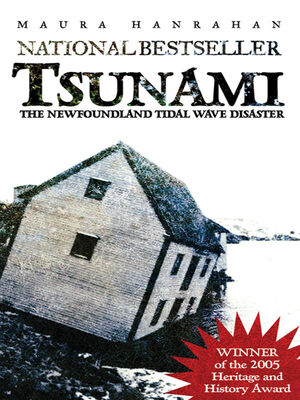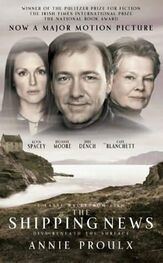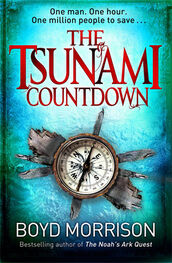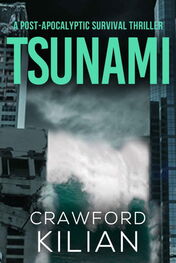George and Ernest Pike were the enterprising young brothers of Burin Bay Arm determined to catch Mrs. Moulton’s sheep for twenty-five cents—in spite of the earth quaking beneath them. George is still living in Burin Bay Arm, while Ernest left home early during World War II and continued to sail in the foreign trade until he was transferred to the Abegweit in the Prince Edward Island-New Brunswick ferry service. He retired as Captain Ernest Pike and wrote to us from Summerside, PEI.
Austin Murphy, of Jersey Room, Lawn, was a seven-year-old boy when the waves gutted the villages of the Burin Peninsula in November, 1929. He had been taking a break from a soccer game when the ground first shook. A retired marine engineer, he wrote to us from Toronto.
Margaret Rennie, of Lord’s Cove, the toddler whose survival was considered miraculous when her mother and siblings died in their swept-away house, stayed with her aunt, Minnie Jackman, in Roundabout near St. Lawrence for awhile. Minnie was her late mother, Sarah’s, sister. Margaret’s brothers, Martin and Albert, stayed with friends. When Margaret was about five she was reunited with her brothers and her father, Patrick, and the family moved to Little St. Lawrence. Patrick went to work in the new fluorspar mines in nearby St. Lawrence and married a local woman. As an adult, Margaret became Margaret Saint and lived in Fox Cove, farther up the Burin Peninsula. There were no photographs of her mother, so she never knew what Sarah looked like.
Part Two recalls the myriad tragedies that befell Taylor’s Bay that singular night. There were almost a hundred livyers in the village in 1929. Although the majority of the houses were demolished by the tidal wave, the community seems to have recovered within a few years; by 1935, it had a population of 104, including two new families, the Pikes and the Chafes. After World War II, however, the village went into decline when people began to move away in search of year-round employment.
When I visited Taylor’s Bay on a bright fall day in 2003, the only sounds were made by black-backed gulls in search of food on the shore. Most of the few homes near the beach seemed deserted. The 2003/4 phone book lists only three families for Taylor’s Bay. But standing among the grasses that encircle the harbour it is not hard to imagine the boats, wharves, fishing rooms, clapboard homes, and people that once made this achingly beautiful place a community.
Also from Part Two, Nurse Cherry stayed in Lamaline until 1932, thus serving two full contracts with Nonia. Nonia’s 1932 Eighth Annual Report delivered at the organization’s headquarters in St. John’s read:
Nurse Cherry remains, as she has been from the first, our ‘high liner’ in number of patients treated and visits paid. She has given 624 treatments in the Dispensary and 1,305 in the homes, and paid the astonishing number of 6,153 visits. Her district reaches from Point Crewe on the West to Lord’s Cove on the East, a distance of eighteen miles. She answers many calls, also, which are long distances from her Centre, going as far as St. Lawrence. This would not be possible but for the motor car given to Nurse Cherry by an American gentleman following the reports of her work during the week of the tidal wave. This is Nurse Cherry’s second term with us, her third year. She has made many friends and done much splendid work in that time.
After the rebuilding operations were underway in the winter of 1929, Nurse Cherry went to St. John’s for a vacation. There she received many accolades, including a cheque for $250 from Dr. Mosdell on behalf of the Government of Newfoundland. In sending the cheque to Nurse Cherry, Mosdell wrote, “The whole Government feel that services such as yours should be signally and at the same time practically recognized.” Nurse Cherry was also awarded an engraved silver clock from the Nonia executive presented by Lady Middleton at a reception at Government House, the home of the governor.
During the summer of 1930 Nurse Cherry went home to England for a three month holiday. Her local committee back in Lamaline invited her to return and she assured them she would. In fact, she spent many years in Newfoundland, serving as district nurse in Heart’s Delight, and ending her career at the Markland Cottage Hospital, where she supervised a staff of nine. Mary Harris, who still lives in nearby Whitbourne, worked with Nurse Cherry as a food supervisor and housekeeper. Mrs. Harris remembers a large silver tray that the people of Lamaline had given to Dorothy after the tidal wave.
Although the two women liked each other, Mary describes Dorothy as a very private person. Indeed, an interesting postscript to the story of this enigmatic hero concerns her life in England prior to her arrival in Newfoundland. Despite the fact that almost all the newspaper accounts and most Nonia records refer to the nurse as Miss Cherry, Dorothy was a widow when she sailed across the Atlantic. Her husband may have been a soldier, as is implied in the preceding text.
In addition, Nurse Cherry seems to have had a daughter who would also have died young. Little information about Dorothy’s family is available (thus, I have had to make up a Christian name for her husband on page 95); according to our sources, she rarely spoke of her past or of home. Perhaps her work in Newfoundland served as a refuge of sorts for her:
I have been here for some time and have settled in with a garden, profusion of flowers and it seems like home. Markland Hospital is a very pretty one, for it is set back in a wooded land and has nicely kept flower beds. The hospital is built in the style of a bungalow and the rooms are painted in pastel shades. It has accommodation for 17 patients but there are times when beds have to be found for 27.
In 1947, Nurse Cherry was made a Member of the British Empire for her long years of nursing service in Newfoundland.
I am uncertain which unheralded local men accompanied Nurse Cherry on her post- tsunami journey to the stricken communities. From the list of Lamaline residents, I chose Thomas Foote and Albert King, both young, relatively unencumbered, and not too badly affected by the tidal wave. The names of the local members of the relief communities, however, are from the historical record.
Prime Minister Richard Squires was in his second administration during the sad events of 1929. He was exonerated of charges (unrelated) of corruption during this term in an enquiry conducted by Governor Middleton (the same thing had happened during his first term). But the Great Depression and a crippling war debt caught up with the tiny country of Newfoundland and on April 5, 1932, ten thousand city residents rioted outside the Legislature—Squires, in disguise, barely escaped. The House was dissolved two months later and Squires’ Liberals lost the election.
Squires spent most of his time on his farm on the outskirts of the city and died in 1940 at the age of sixty.
From Part Three, Magistrate Malcolm Hollett later enjoyed a career in politics. He was elected to the National Convention, formed to debate Newfoundland’s post-war future at a time when the map of the world was being redrawn. Hollett favoured Responsible Government (roughly, independence) rather than Confederation with Canada. This battle was lost—fifty-two percent to forty-eight percent on a second referendum—but Hollett was elected to the House of Assembly in 1952 and became leader of the Progressive Conservative party the following year. In this capacity, he was leader of the opposition against Premier Joseph Smallwood, holding the position for several years. Hollett’s political career ended after ten years in the Canadian Senate.
Captain Dalton is the real name of the man who skippered the Meigle , the relief ship sent out by Squires’ government. However, so little information was available on him—his first name even seems to be lost to history—that I invented virtually everything else about him. The historical record shows that the relief team of the Meigle responded quickly and generously to the dire needs of the people they encountered on their south coast trip; in addition, Dr. Mosdell had written that the captain had been particularly valuable to the relief team. Thus, I envisioned Dalton as a kind and generous man.
Читать дальше






